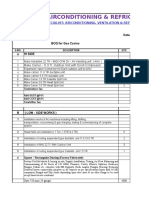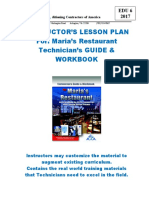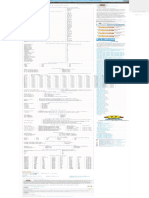0% found this document useful (0 votes)
173 views62 pagesLecture1 - Introduction of HVAC
The document provides an overview of HVAC systems, their components, and basic refrigeration cycles. It discusses various HVAC applications and system components like chillers, cooling towers, air handling units, fan coil units, ductwork, and more. It also explains terms like TR, EER, and provides examples of basic refrigeration cycles.
Uploaded by
Hatdog KaCopyright
© © All Rights Reserved
We take content rights seriously. If you suspect this is your content, claim it here.
Available Formats
Download as PDF, TXT or read online on Scribd
0% found this document useful (0 votes)
173 views62 pagesLecture1 - Introduction of HVAC
The document provides an overview of HVAC systems, their components, and basic refrigeration cycles. It discusses various HVAC applications and system components like chillers, cooling towers, air handling units, fan coil units, ductwork, and more. It also explains terms like TR, EER, and provides examples of basic refrigeration cycles.
Uploaded by
Hatdog KaCopyright
© © All Rights Reserved
We take content rights seriously. If you suspect this is your content, claim it here.
Available Formats
Download as PDF, TXT or read online on Scribd
/ 62































































